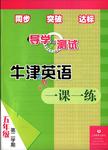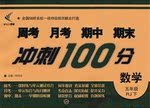题目内容
The doctor had almost lost hope at one point, but the patient finally ______.
A. pulled out B. pulled through
C. pulled up D. pulled over
练习册系列答案
 导学与测试系列答案
导学与测试系列答案 新非凡教辅冲刺100分系列答案
新非凡教辅冲刺100分系列答案
相关题目
题目内容
The doctor had almost lost hope at one point, but the patient finally ______.
A. pulled out B. pulled through
C. pulled up D. pulled over
 导学与测试系列答案
导学与测试系列答案 新非凡教辅冲刺100分系列答案
新非凡教辅冲刺100分系列答案